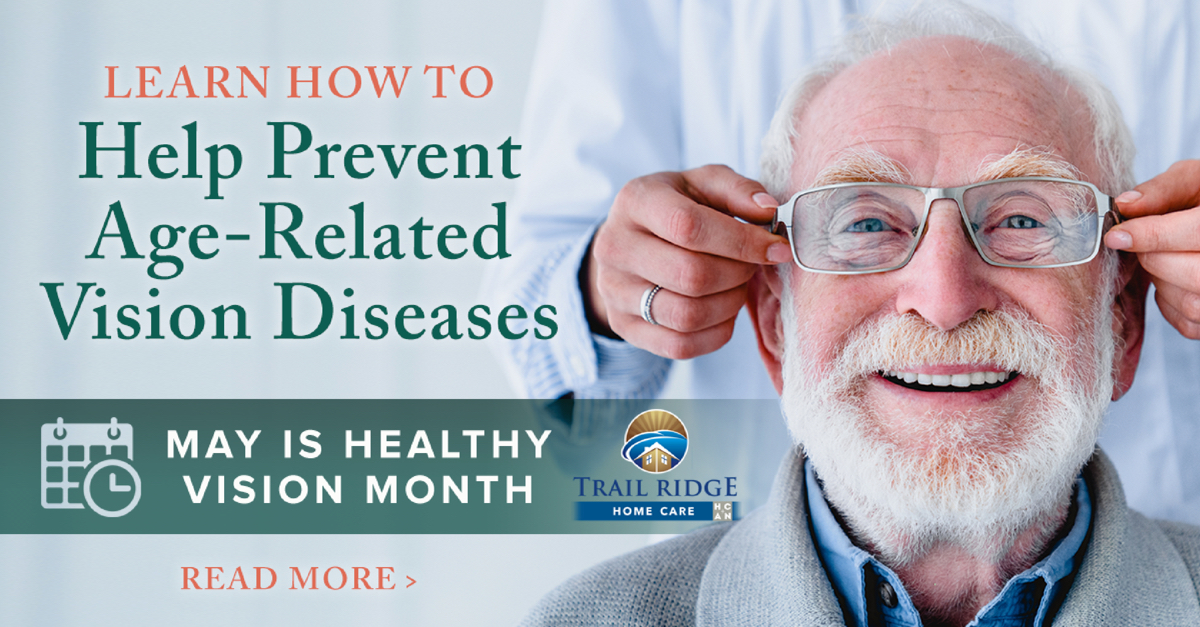Healthy aging includes healthy vision.
May is Healthy Vision Month – a great time to learn about common age-related eye problems and what you can do to prevent them.
According to the American Optometric Association, the risk of developing eye diseases significantly increases after age 65. The most common age-related vision diseases include:
Glaucoma – a group of diseases that damages a nerve in the back of the eye called the optic nerve. It can affect one or both eyes and can result in the loss of peripheral vision.
Cataracts – a clouding of the eye’s lens that affects more than 24 million people in the United States. Depending on the size and location, cataracts can cause blurry vision, decreased contrast sensitivity, decreased ability to see in low light conditions (such as driving at night), dulling of colors and increased sensitivity to glare.
Dry-eye – a common chronic problem, it’s a condition that results in too few or poor quality tears.
Age-related macular degeneration (AMD) – a slow breakdown of the light-sensitive tissue in the eye, causing loss of central vision.
Retinal detachment – a tearing or separation of the retina from the underlying tissue.
Diabetic retinopathy – a condition that occurs in people who have diabetes, it’s the most common cause of vision impairment among adults over 40.
The good news… experts at the Centers for Disease Control and Prevention say are things you can do to reduce the risk of vision impairment, including:
Getting regular eye exams for early detection and treatment of eye problems.
Eating a healthy diet that includes dark leafy greens like spinach, kale and collard greens, which are high in antioxidants.
Quit smoking or don’t start – an important way to prevent AMD and other common eye diseases.
Know your family history, because some eye diseases run in families, and early treatment is often the most effective.
For more information about age-related vision disorders, talk to your personal physician or visit the websites for the Centers for Disease Control and Prevention, American Optometric Association and the National Institute on Aging.
